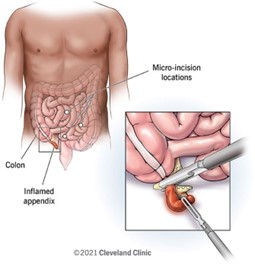A client is receiving IV heparin and oral warfarin after a pulmonary embolism (PE). The nurse determines the client's activated partial prothromboplastin time (APTT) value is two times the control value; the prothrombin time (PT) level is the same as the control, and the international normalized ratio (INR) is 1. Which protocol prescription should the nurse implement?
Reference Range:
Activated Partial Prothromboplastin Time (APTT) [Anticoagulant therapy: 1.5 to 2 times the control value in seconds.] Prothromboplastin Time (PT) [Anticoagulant therapy: greater than 1.5 to 2 times the control value.] International Normalized Ratio (INR) [0.8 to 1.1]
Increase the warfarin dose.
Withhold the heparin and continue the same dose of warfarin.
Decrease the heparin dose.
D Increase the heparin dose and decrease the warfarin dose.
The Correct Answer is B
A) Incorrect - The APTT value being two times the control value indicates that the client's anticoagulation is within the therapeutic range. There is no need to increase the warfarin dose.
B) Correct - With the APTT value within the target range and the PT and INR values also normal, the nurse should continue the same dose of warfarin and withhold the heparin.
C) Incorrect - Decreasing the heparin dose is not indicated, as the client's APTT is already within the therapeutic range.
D) Incorrect - Increasing the heparin dose and decreasing the warfarin dose is not necessary, as the client's anticoagulation levels are appropriate.
Nursing Test Bank
Naxlex Comprehensive Predictor Exams
Related Questions
Correct Answer is ["A","C","D"]
Explanation
The PN should palpate the rate and volume of the pulse, measure body weight at the same time daily, and observe the color and amount of urine when assessing a client for signs and symptoms of fluid volume excess. These actions can help detect changes in the cardiovascular, renal, and fluid balance systems that may indicate fluid overloads, such as tachycardia, bounding pulse, weight gain, edema, oliguria, or dark urine.
The other options are not correct because:
B. Checking fingernails for the presence of clubbing is not relevant for assessing fluid volume excess, as clubbing is a sign of chronic hypoxia or lung disease that causes enlargement of the fingertips and nails.
E. Comparing muscle strength of both arms is not relevant for assessing fluid volume excess, as muscle weakness is not a specific sign of fluid overload, but may be caused by various factors such as electrolyte imbalance, nerve damage, or fatigue.
Correct Answer is D
Explanation
- An 18-year-old client with a mild mental disability is a client who has a lower than average intellectual functioning and some limitations in adaptive skills, such as communication, socialization, and self-care. A mild mental disability may affect the client's ability to understand, cope, or cooperate with medical interventions, such as ambulation after surgery.
- Ambulation is the act of walking or moving around. It is an important part of postoperative care, as it helps to prevent complications such as deep vein thrombosis, pulmonary embolism, pneumonia, atelectasis, constipation, and pressure ulcers. Ambulation also promotes circulation, wound healing, and muscle strength.
- When the practical nurse (PN) attempts to assist the client to ambulate on the first postoperative day after an appendectomy, the client becomes angry and says, "PN, 'Get out of here! I'll get up when I'm ready!" This may indicate that the client is experiencing pain, fear, anxiety, or frustration due to the surgery and the recovery process.
- The best response for the PN to make is to acknowledge the client's feelings, provide reassurance and support, and set a clear and realistic goal for ambulation. This will help to establish rapport, reduce resistance, and motivate the client to participate in the care plan.
- Therefore, option D is the correct answer, as it shows empathy and respect for the client's feelings, while also informing the client of the expectation and time frame for ambulation. Option D also allows the client some time to prepare mentally and physically for the activity.
Options A, B, and C are incorrect answers, as they do not address the client's emotional needs or demonstrate effective communication skills.
Option A is incorrect because it uses a threatening tone and does not acknowledge the client's feelings.
Option B is incorrect because it assumes that the client feels angry about the pain of ambulation, which may not be true or helpful.
Option C is incorrect because it appeals to authority and does not explain the rationale or benefits of ambulation.

Whether you are a student looking to ace your exams or a practicing nurse seeking to enhance your expertise , our nursing education contents will empower you with the confidence and competence to make a difference in the lives of patients and become a respected leader in the healthcare field.
Visit Naxlex, invest in your future and unlock endless possibilities with our unparalleled nursing education contents today
Report Wrong Answer on the Current Question
Do you disagree with the answer? If yes, what is your expected answer? Explain.
Kindly be descriptive with the issue you are facing.
